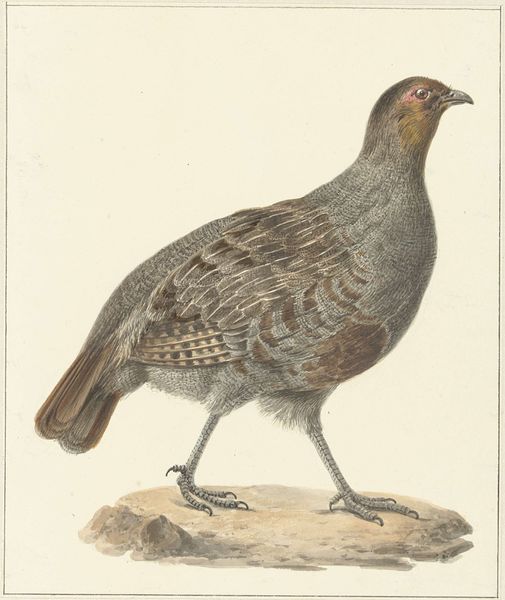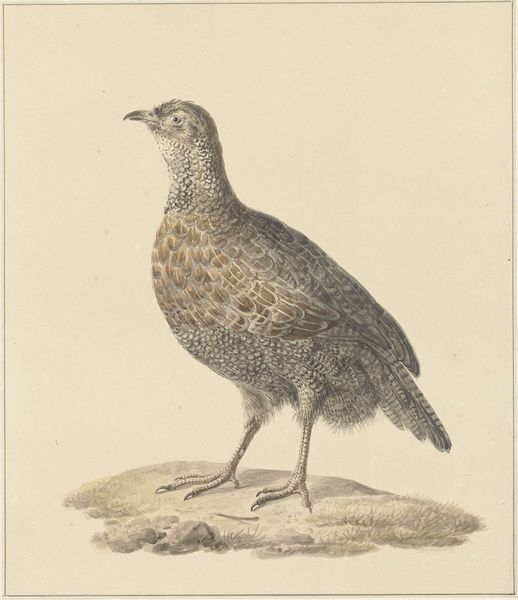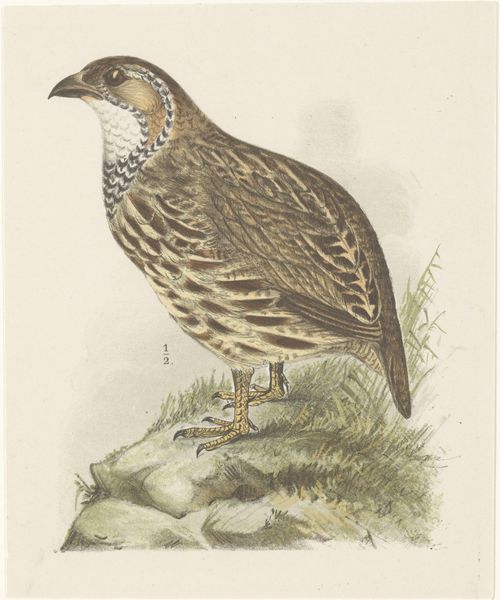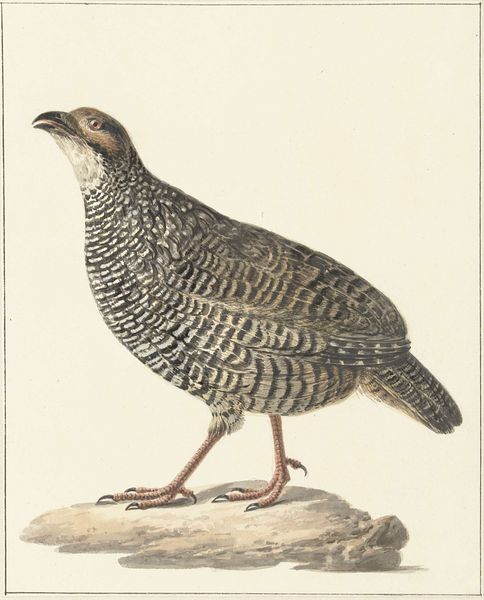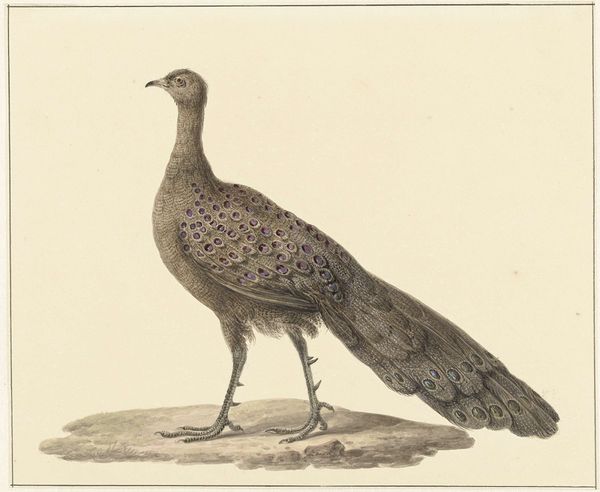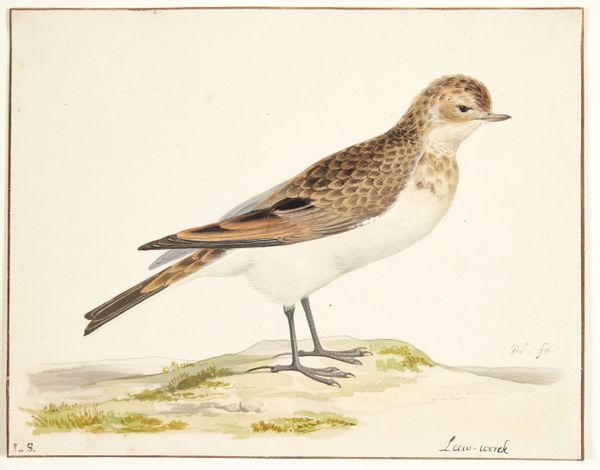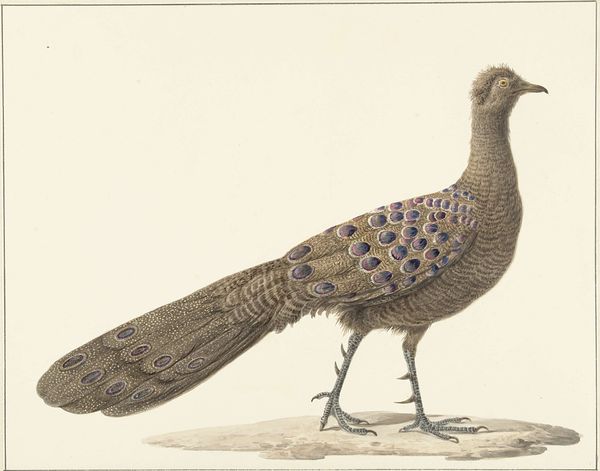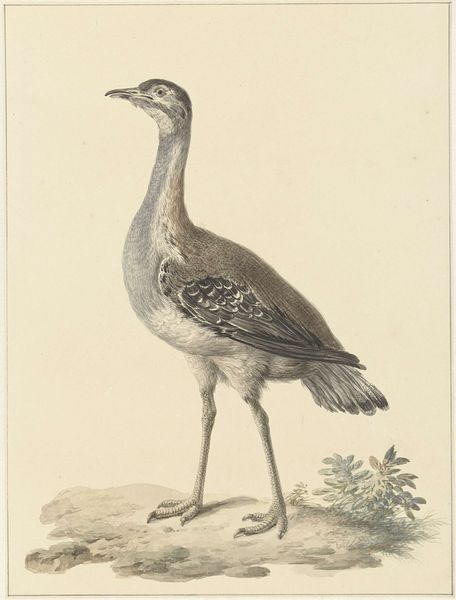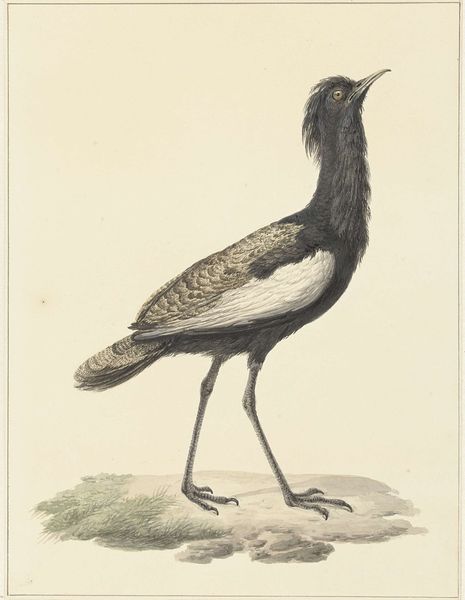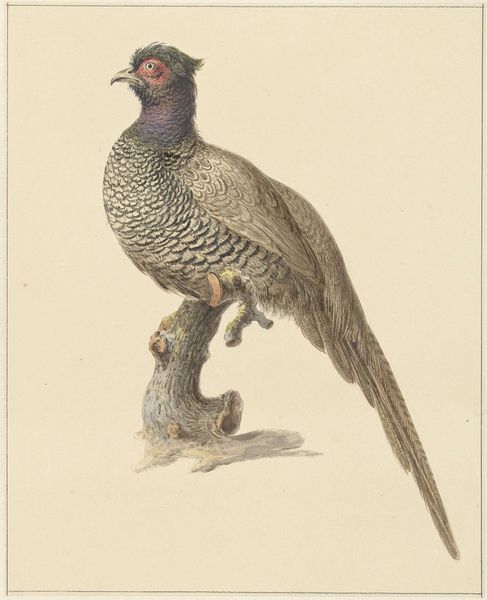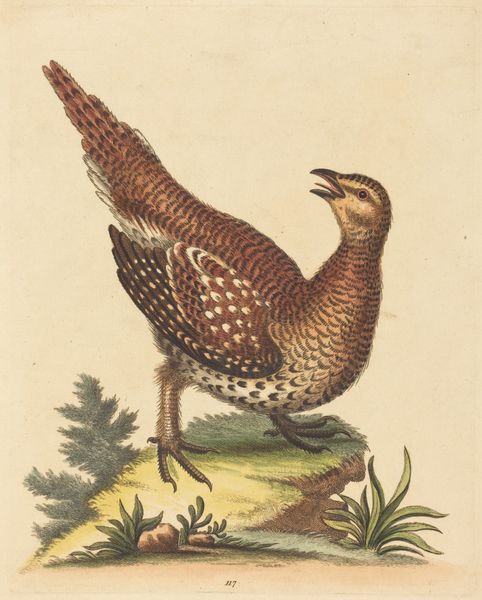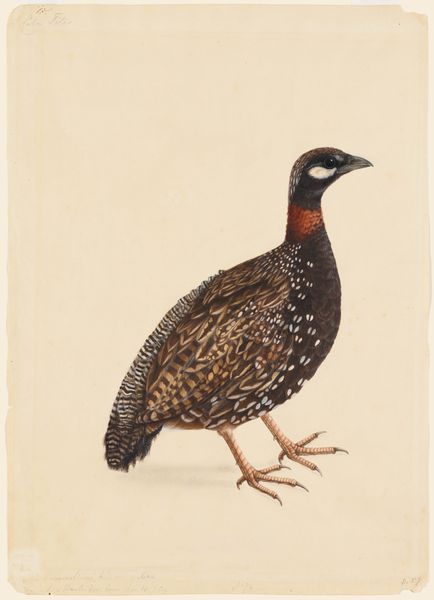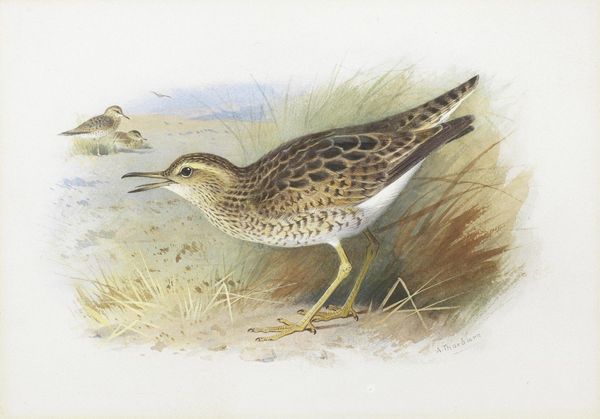
drawing, print, plein-air, watercolor
#
naturalistic theme
#
drawing
# print
#
plein-air
#
landscape
#
botanical illustration
#
figuration
#
watercolor
#
botanical drawing
#
watercolour illustration
#
genre-painting
#
academic-art
#
naturalism
#
botanical art
#
realism
Dimensions: height 276 mm, width 238 mm
Copyright: Rijks Museum: Open Domain
Curator: This delicately rendered watercolor and print titled “Bobwhite (Colinus virginianus)” comes to us from the hand of Pieter Pietersz. Barbiers, dating between 1759 and 1842. What is your initial impression of the work? Editor: It's surprisingly poignant. There’s an almost photographic realism to the way the bird is captured, yet the soft watercolors evoke a deep sense of quietude and vulnerability. Curator: Indeed. The piece aligns with the naturalistic movement of the time, reflecting an impulse to accurately document the natural world. Bobwhites, though now common, had particular symbolic resonance relating to abundance, agrarian stability, and the human relationship to the natural world. Editor: That relationship seems central, especially given how birds often reflect social or spiritual aspiration. Here, this quail standing on what seems a somewhat rocky patch seems to ground us instead in the earthy reality of survival. The very careful detail, even in the shadow, gives this creature so much gravity. Curator: Note that it is likely rendered 'en plein air,' suggesting an interest in experiencing and capturing nature firsthand. Consider how that outdoor experience informed both scientific inquiry and, perhaps, national identity during this era. Think of the burgeoning Romantic movement; art was integral to forming these visual symbols. Editor: It makes me wonder, did Barbiers select this bird specifically, perhaps noticing its cultural relevance? Did he approach painting in situ in this manner to represent what this symbol can offer? Curator: Such detail might serve the symbolic language of the painting as you pointed out, though academic art also placed a great value on capturing reality faithfully. The symbolism may be heightened in relation to other meanings ascribed to this unassuming bird during the period in which it was made. It offers us a lens onto that past relationship and continuity of these animal emblems in culture. Editor: It leaves me pondering the role of the artist as both observer and interpreter. A blend of scientific accuracy and a sensitivity to the emotional weight of an image that tells a story not just of naturalism, but also about a certain human hope of integration with natural order.
Comments
No comments
Be the first to comment and join the conversation on the ultimate creative platform.
